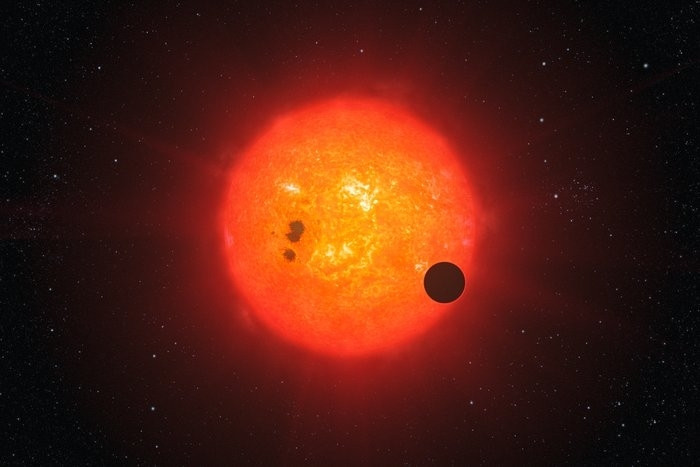There is a planet 1000 light years away with titanium skies, find European astronomers
The atmospheric temperature of the planet, WASP-19b, is around 2,000 Celsius, say reports.

In a first, researchers at the European Southern Observatory (ESO) have detected an exoplanet with titanium dioxide in its atmosphere. The planet, called WASP-19b, is part of the WASP-19 star system which is about 1,000 light years away from the Earth.
The observation, which was made by ESO's Very Large Telescope (VLT), also offers a unique look into the composition of WASP-19b's atmosphere, including its pressure and temperature makeup.
According to a report by Futurism, WASP-19b is a planet that is classified as "Hot Jupiter". Although the planet is as big as Jupiter it completes an orbit in just 19 days as it is so close to its parent star.
Its close proximity to the star makes it a really hot planet. According to reports, the atmospheric temperature of the planet is around 2,000 Celsius.
Researchers were able to detect the titanium oxide by studying the light that gets through the planet's atmosphere, says the report. Rarely seen on Earth, titanium oxide is normally found in atmospheres of cool stars.
The report points out that in the atmospheres of a hot planet like WASP-19b, titanium oxide absorbs heat and does not allow heat to enter it. Interestingly, if there is enough titanium oxide in the atmosphere, a planet will see thermal inversion – a drop in temperature at the higher altitudes of the atmosphere, says the report.
Scientists also found that apart from titanium oxide, Wasp-19b's atmosphere contains sodium and water.
The findings on Wasp-19b's atmosphere comes after a whole year of collecting data and comparing observations.
"Detecting such molecules is, however, no simple feat," explains Elyar Sedaghati, ESO student working on this project. "Not only do we need data of exceptional quality, but we also need to perform a sophisticated analysis. We used an algorithm that explores many millions of spectra spanning a wide range of chemical compositions, temperatures, and cloud or haze properties in order to draw our conclusions."
These same methods are used to study the makeup and composition of other planets as well and detecting metals and other compounds are one way to develop improved models of exoplanet atmospheres, says the ESO.
The report mentions that as of July 2017, astronomers have identified over 3,500 exoplanets of which there are only around 300 Earth-like planets, but habitable for humans and having forms of alien life are not the same thing, points out Futurism.
Life is possible out there that might be completely foreign to humans, says the report. Life could exist on a microbial level, in oceans or even buried under the surface of these exoplanets planets. Earth's atmosphere is primarily Nitrogen and Oxygen rich and life is carbon based, but planets with gas mixtures of other biosignatures could possibly hold life that is completely unrecognisable.
The ESO is an intergovernmental astronomy organisation that is supported by 16 European countries. They focus on ground based astronomy and are building the "world's largest eye on the sky" at Cerro Armazones close to their VLT called the Extremely Large Telescope (ELT).
© Copyright IBTimes 2025. All rights reserved.





















